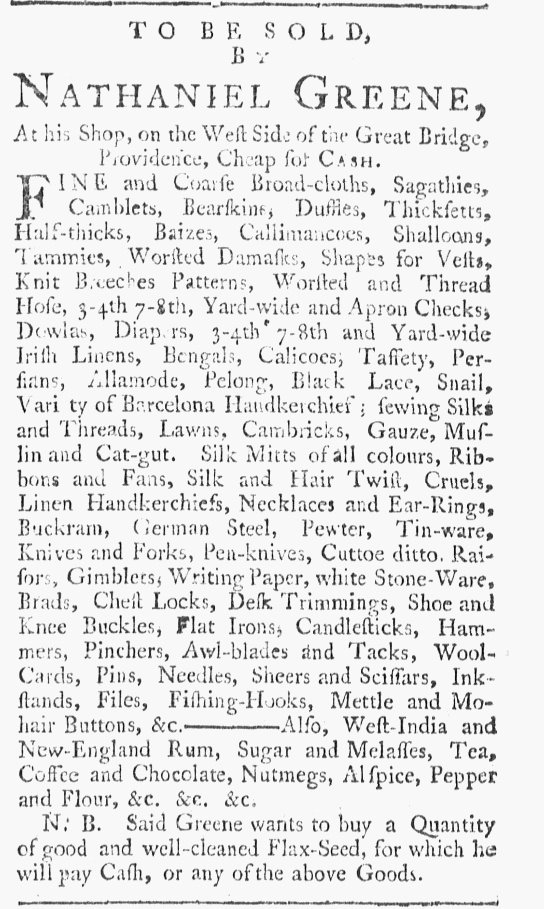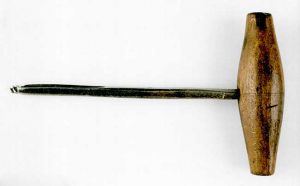What was advertised in a colonial American newspaper 250 years ago today?

“Tin-ware, Knives and Forks, Pen-knives, Cuttoe ditto, Raisors, Gimblets.”
Reading an eighteenth-century advertisement can sometimes feel like deciphering a foreign language. Often that is the case when encountering an array of textiles (such as the “Sagathies, Camblets, Bearskins, Duffles, Thicksetts, Half-thicks, Baizes, Callimancoes, Shalloons, Tammies” listed in today’s advertisement), but some advertisements included other sorts of merchandise that modern readers likely have difficulty identifying.
For instance, the portion of today’s advertisement that lists metal goods and hardware includes “Tin-ware, Knives and Forks, Pen-knives, Cuttoe ditto, Raisors, Gimblets.” Taking into account the non-standardized spelling of the eighteenth century, “Raisors” were razors, but what did Nathaniel Greene mean by “Cuttoe ditto” and “Gimblets”?
Carpenters may recognize the gimblet as a hand tool similar to an auger, except smaller. Its size made it ideal for drilling small holes without splitting wood. A variety of colonial artisans may have been especially interested in purchasing gimblets for their workshops, but the tool probably had practical use in many homes as well.

Deciphering “Cuttoe ditto” requires reading this item as part of a larger phrase: “Pen-knives, Cuttoe ditto.” The “ditto” indicates that readers should substitute the word knives.
So, Greene sold cuttoe knives, but what were those? It seems that question generates some amount of uncertainty, which Steve Rayner and Jim Mullins have addressed in “Cuttoe Knives Revealed” at “Of Sorts for Provincials” (supplemented with eighteenth-century trade cards and illustrations). Rayner and Mullins reach the conclusion that cuttoe knives were clasp knives (also called spring knives), not to be confused with the larger cutteau de Chasse (a variety of short sword) also produced and sold in the eighteenth century.
While this advertisement presents a bit of a mystery for modern readers, Rayner and Mullins consulted other advertisements to answer some of their questions. In particular, three newspaper advertisements printed in the 1760s clarified what kind of knife Greene sold. An advertisement in the Boston Evening-Post (June 23, 1760) listed “cutteau and all other sorts of clasp knives,” another in the Boston News-Letter (March 25, 1762) included “spring Knives & Cutteau ditto,” and one in the Pennsylvania Chronicle (May 9, 1768) mentioned “cutteau pocket knives.” The last two distinguished the cutteau knives from penknives.
Cuttoe knives may be unfamiliar to modern readers, but potential customers in eighteenth-century Providence would have readily recognized this product when they encountered it in Greene’s advertisement.

Thank you for the citation sir.
And many thanks to you for helping to solve the mystery of the cuttoe knife!